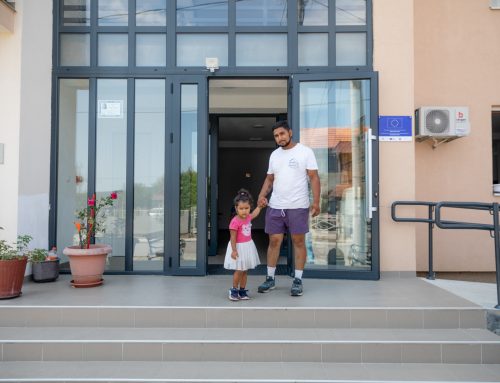What do a failed marriage and a case brought against the State have in common? Surely, long time and expenses before the solution is found. The end of a marriage is always sad and emotionally complicated. But what is perhaps even more complicated is what follows between the partners in legal terms, that is the process of changing the civil status.
In terms of timeframe, the same applies to compensation claims against the State; even if the State loses, it takes a significant amount of time before the compensation is received.
So, how long does a divorce procedure last and cost? And how much does the State pay for lost cases and accrued interests in favour of people who seek compensation? In both cases, the answer is: too much. What a failed marriage and a claim against the State have in common is also the fact that they fall under typical cases that can be resolved through mediation.
In other words, how much money, time and nerves could be saved through mediation?
Mediation is an alternative way to resolving judicial cases, without the need to turn to the courts. It consists of a mediator who gathers the conflicting parties and leads them to agree on a mutually acceptable solution. The agreement reached by two parties does not result in a win/lose situation, but rather in finding the best possible solution for both parties, the one in which the interests of both parties are protected. Moreover, the cases that are resolved through mediation are cheaper and faster, but nonetheless cannot succeed without an agreement.
Mediation is not mandatory in Serbia and the courts offer it in case the parties wish to take care of their interests on their own, rejecting a judge’s verdict.
It is used mainly in cases that concern property rights; family relations, such as inheritance, divorce or co-ownership; but also in commercial and financial issues, such as debt restructuring.
As explained by Blazo Nedic, president of the Serbian National Association of Mediators, “a greater implementation of this procedure would bring about a better system of justice and save a great deal of money.”
According to Nedic, in fact, “there are almost three hundred thousand cases filed against the Republic of Serbia and in most of them the State is aware it will lose. However, the judicial processes are conducted in courts, lasting for four to five years. After that period, the State has to pay not just the initial amount claimed by the other party and the accrued interests, but it also has to bear all the expenses. So after four to five years the State has to pay up to three or four times more than the initial amount. On the other hand,” Nedic continues “a resolution reached through mediation means that the parties have agreed on an acceptable amount that could be paid after a shorter period. And we mustn’t forget that the money the State pays for lost cases comes from the taxpayers. Therefore, the mediation results in a win-win situation: the claimant receives swift compensation; the State saves the money and often its reputation, while the courts are relieved of handling long-pending cases.”
However, despite the potential savings of both time and money, mediation is seldom used in Serbia. According to the Ministry of Justice, in 2016 only 260 cases were solved through mediation. As a natural consequence of this situation, the courts are put under a lot of strain. In fact, according to the Ministry of Justice, there are more than one million pending cases in Serbian courts, some of which could be resolved through out of court agreements with the help of a mediator, spending less time and money.
According to data based on annual reports by mediators and published on the Ministry of Justice website, 62 mediations in commercial dispute cases have been recorded in Serbia. “Though the number might seem small, the significant increase in comparison to the last year’s statistics, which told of merely six mediations [having taken place], is encouraging,“ said minister Kuburović. She added that the average time for adjudication of cases before first-instance commercial courts in 2014 was 337 days, while the majority of mediations carried out in 2016 took two to five meetings, i.e. they were ended in up to three months. All of this indicates a reason for turning to mediation and promoting its use.
Another concrete example, illustrated by Blazo Nedic, is the current workers’ strike at the Fiat factory. “Two weeks ago, the Fiat factory halted the production and is now facing major losses as each car produced in Kragujevac costs about ten thousands euros. This is the prime example of a case that could be solved through mediation, leading to an agreement between workers and the factory management,” Nedic says.
One of the reasons for not using mediation is the lack of public knowledge and awareness of mediation as a potential tool for resolving legal disagreements. As a matter of fact, only two universities in Serbia offer mediation as a course in their bachelor curricula. Furthermore, even those two higher education institutions offer it as an elective and not a mandatory course.
However, the situation is quite similar in the rest of Europe, since the percentage of cases solved through mediation remains far too low. One exception to this rule is Italy. As explained by Leonardo D’Urso, a mediator and the CEO of Alternative Dispute Resolution Centre, “Italy is the only country of the European Union with a perfect balance between mediation and traditional procedures. In other EU countries, the percentage of cases solved through mediation stands at 1, meaning that only one case out of a hundred is solved through mediation.”
A survey supported by the European Parliament “Quantifying the cost of not using mediation – a data analysis” confirms this: mediation in Italy last “47 days on average” and incurs less costs compared to ordinary judicial procedures.
Leonardo D’Urso, who is currently working on the Judicial Efficiency Project in Serbia, insists that mediation should be promoted. “The benefit brought by mediation to the justice system is two-fold: one is qualitative, since the solution is not imposed by the judge but rather achieved respecting the interests of the parts and also because it’s cheap and very fast, given that a mediation usually takes up to two months; the other is quantitative, because the more cases are resolved through mediation, the less burden is placed on courts and vice-versa: bringing more cases before courts results in slowing the process of getting justice down as courts have more work on their hands,” says Leonardo D’Urso.
In other words, an increase in the use of mediation procedure would contribute to improving the overall system of justice. This is of particular importance for Serbia as judicial reform is a fundamental step in the EU pre-accession process.
Along with several other projects, such as the backlog reduction, the promotion of mediation is part of the on-going EU-funded endeavour Judicial Efficiency Project.
Giorgio Fruscione, Italian journalist and intern at the EU Delegation to Serbia




